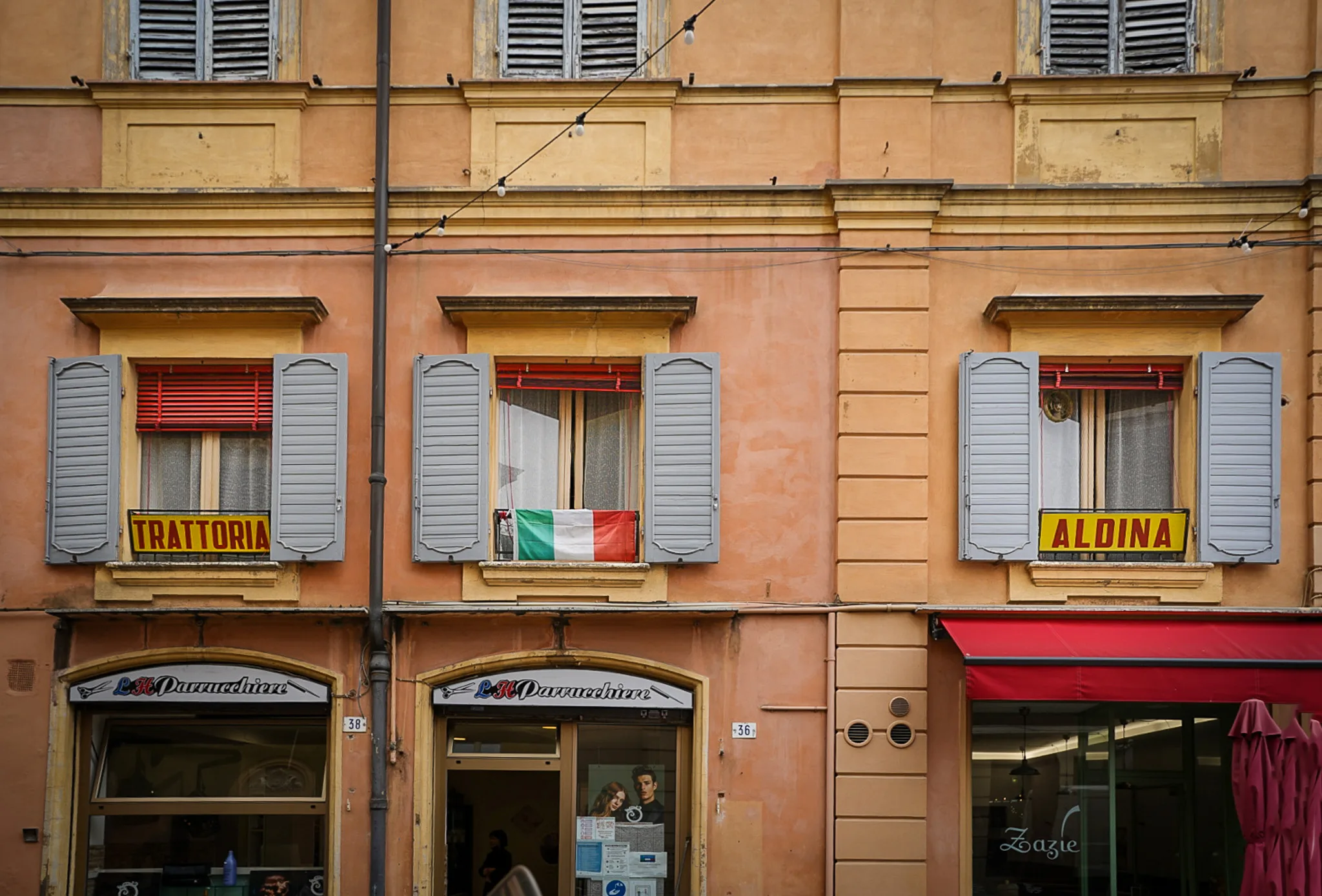When you’re in Italy, you notice lots of different dining options. You’ll stumble upon a ristorante, then a trattoria, and even an osteria. But wait…there’s also a hosteria?!
You may also be wondering what the difference is between all these dining establishments and what makes them unique from one another.
And that’s just the beginning.
But what do they all mean? And is there really a difference between a trattoria and an osteria?
Below, we’ll go over all the different dining establishments you’ll find while traveling through Italy and explain the differences between each one.
Related: Read all our other Italy travel guides and posts.
Guide to the Different Types of Italian Eateries
#1 Ristorante
A Ristorante is a full-service restaurant that is typical of a fine dining establishment. Here, you would wait to be seated by a host or hostess. The wait staff, including a sommelier, should be experienced and knowledgeable about food and wine as well as with proper service etiquette. You should expect a printed menu with à la carte offerings. Your table will typically be dressed in clean linen and the tableware and china match.
Your food should be prepared by a professional chef and full kitchen staff and should represent selections from several ordered courses. However this is not always the reality any longer, so don’t expect that the food is necessarily better or more sophisticated at ristorantes.
Ristorantes are often more expensive than all the other options we’ll mention below. Expect a 3-hour dining experience if you decide to go the route of a ristorante.
#2 Trattoria
Trattorias are family-run restaurants that often serve a few choice regional dishes (think carbonara in Rome; lasagna in Bologna; ribollita in Florence; pesto in Genoa), with many of the recipes passed down from generation to generation.
The name comes from the French word “traiteur” which derives from “traiter” and respectively means “host/caterer” and “to treat”.
Mom or grandma usually cooks the meals, dad handles the cash register, and the kids wait tables. Decor can range from neat and comfortable to a real “hole in the wall.”
Prices are usually cheaper when compared to a ristorante.
You’ll find that if you go to two different trattorias you may see the same exact things on the menu. This is because they offer their family’s version of that regional dish, which isn’t a bad thing if you love Italian food.
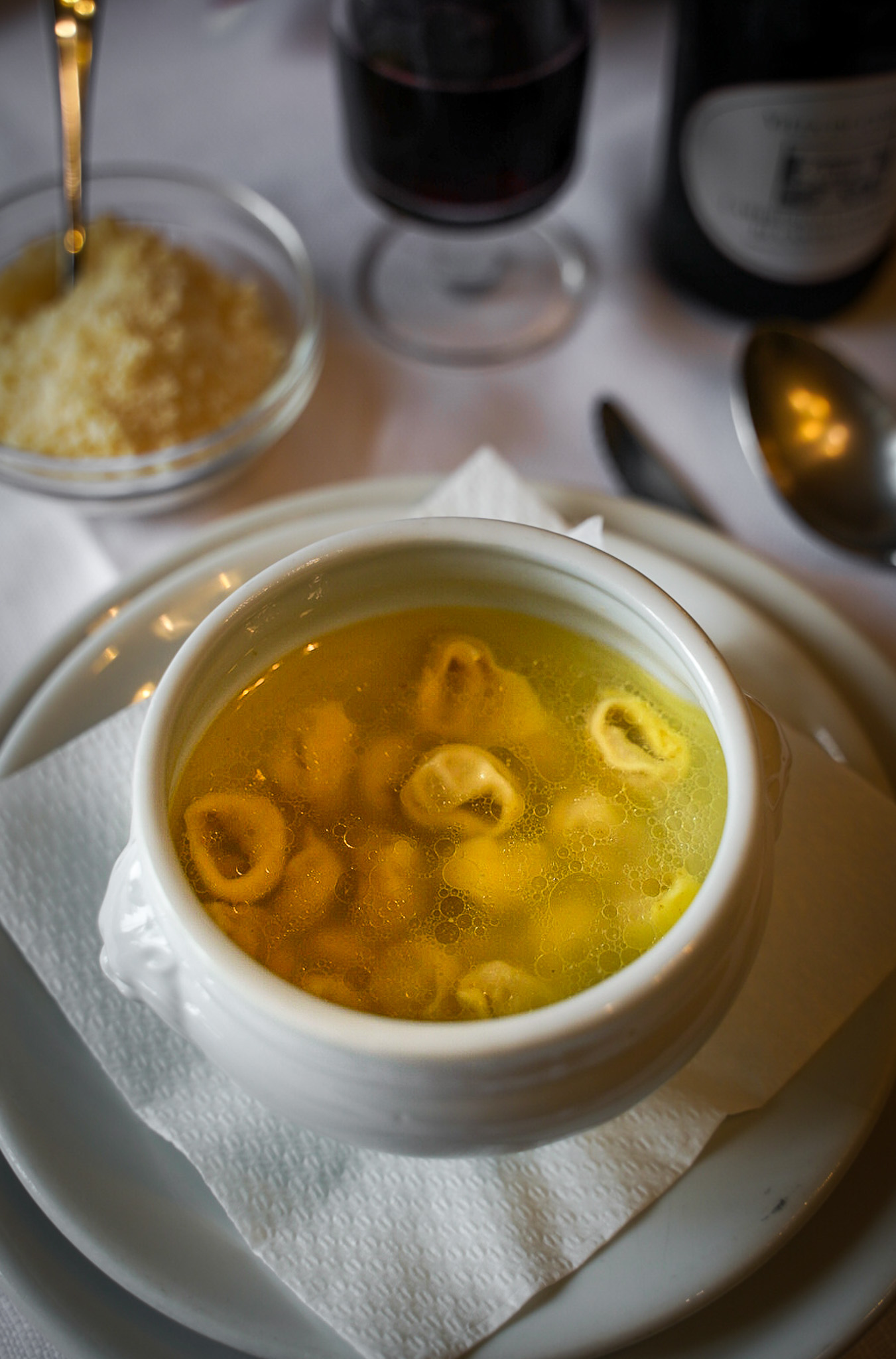
Tortellini en Brodo from Trattoria Aldina in Modena, Italy
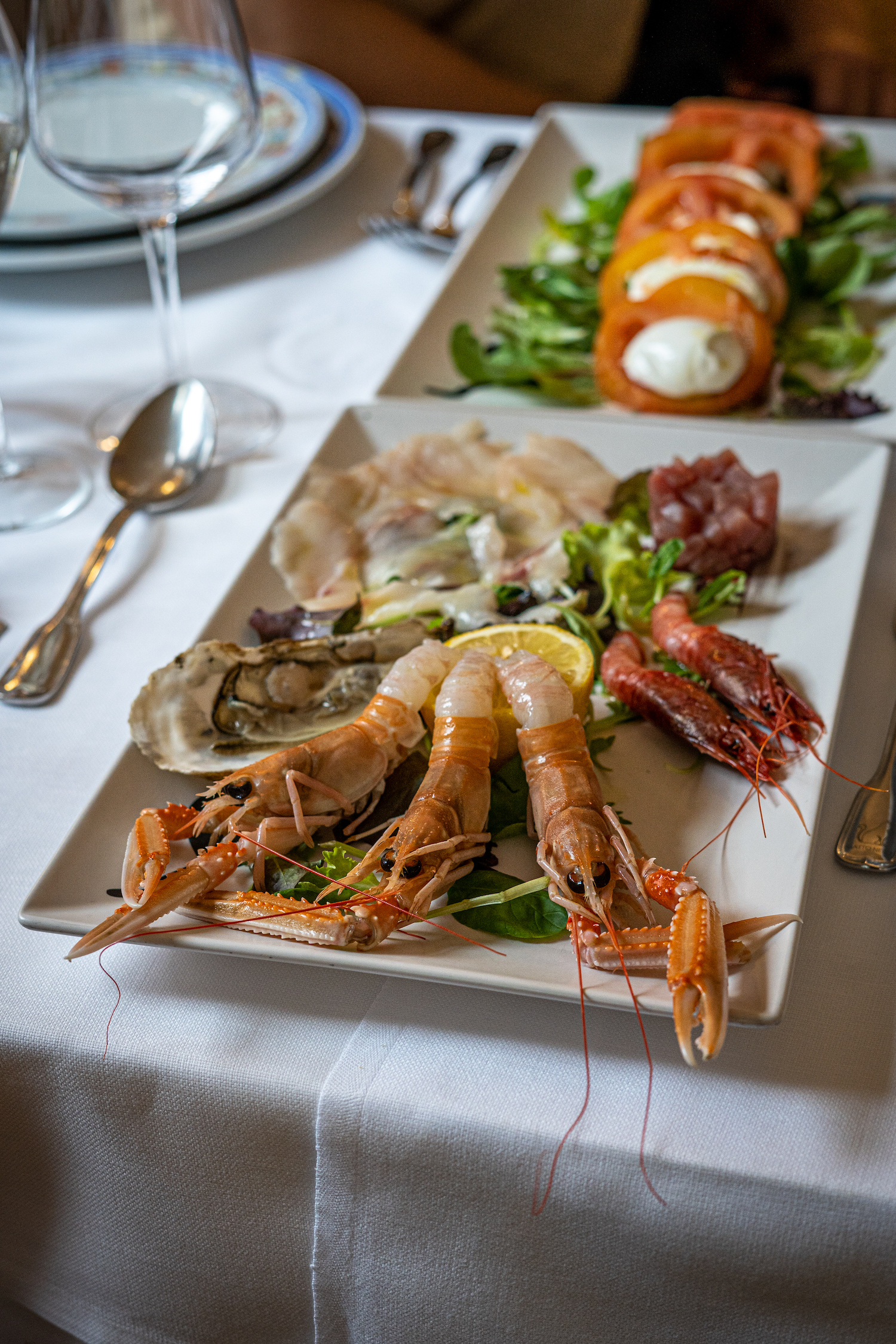
Fresh seafood platter from Trattoria el Gatto Nero in Burano, Italy
#3 Osteria (or Hosteria)
Back in the day, an osteria, or inn, was a local gathering spot where locals gathered to play cards and drank local wine from the innkeeper’s oak barrels. It was almost like what we’d call a wine bar.
This type of establishment didn’t always serve food and was quite similar to a bar. Osterias have transitioned throughout the years and now they are very similar to trattorias. Here you’ll find home-cooked, regional meals often in a restaurant with rustic charm. And dining is often done at communal tables.
The menu is often much simpler than trattorias and offerings may change daily. Some may also offer 2 or 3 courses which include a glass of wine and written on a chalkboard.
Prices at an osteria are similar to trattorias.
A good example of an Osteria as it was back in the day is Osteria del Sole. It’s the oldest running osteria in Bologna which has been around since 1465. You’ll have to bring your own food to accompany their extensive selection of wines and beers.
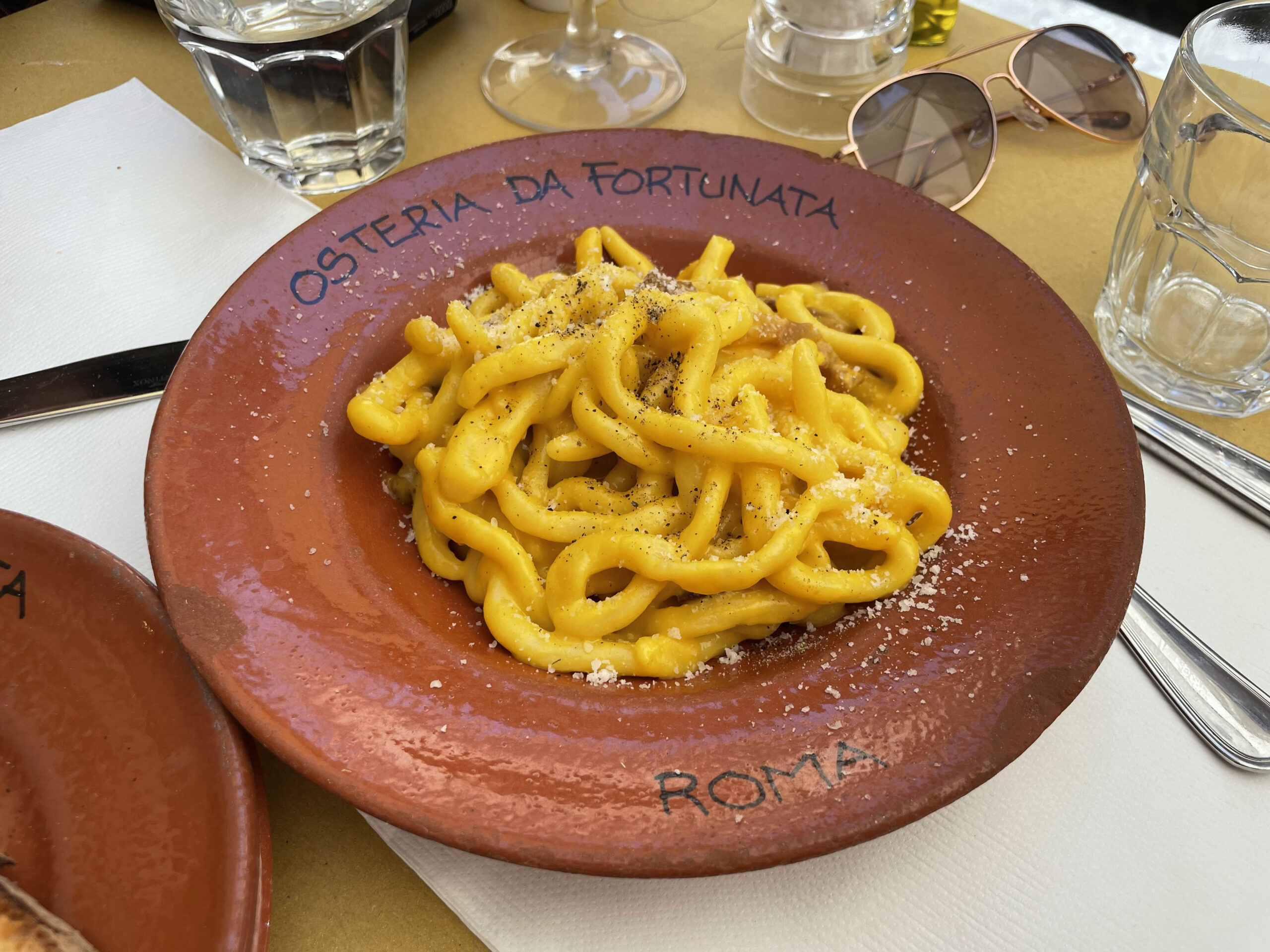
Carbonara Pasta from Osteria da Fortunata in Rome, Italy
#4 Taverna
Once bars or taverns, these establishments have slowly transformed into osterie and trattoria and may also have a bohemian or rustic feel to them.
Tavernas are more old-fashioned and serve wine. The food offered at a taverna is traditional and simple. Nowadays there is no difference between them but they keep “taverna” in their name.
An authentic taverne is more often a secluded restaurant in the Italian mountains and is a place where you could find a hearty meal, something to drink, and possibly a warm bed to sleep in.
Today, you can still find a few authentic tavernas, but you are more likely to find an agriturismo which is more of a Bed & Breakfast.
#5 Tavola Calda
The name translates to “hot table.” These establishments are quick-service fast-food places or a cafeteria offering cheap home-cooked meals and the menu changes daily based on seasonality and regional offerings.
For example, gnocchi in Rome is only served on Thursdays. If you see it on the menu 7 days a week you may be in a tourist trap or not in a Tavola Calda at all. Authentic Roman restaurants only serve this dish on giovedí (or the Day of Jupiter).
There is typically no table service and people dine in open table seating arrangements. This is a great option for budget travelers and solo diners.
#6 Pizzeria
Pizzerias are sit-down restaurants that predominantly serve pizza with wine, a variety of salads, and a few pasta selections.
They’re typically affordable and everyone eats their own pie, often hands or with a knife and fork.
Some pizzerias may also serve other flatbreads such as Farinata (or Cecina), a chickpea flatbread that is custardy and savory.
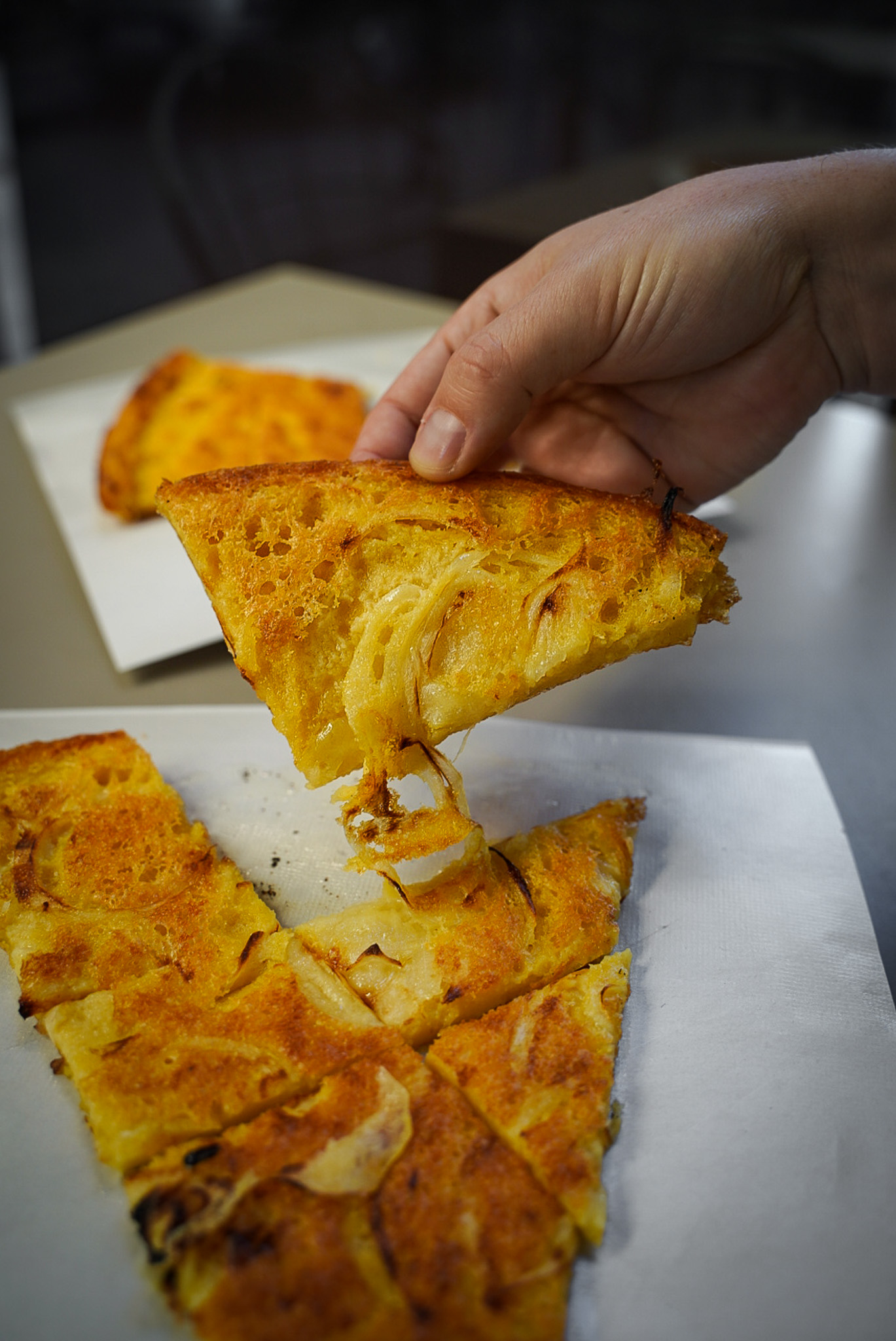
Farinata or Cecina from La Cranceria in Florence, Italy
#7 Pizza a Taglio
Alternatively, for a slice of pizza on the run, look for signs that read “pizza a taglio.” This literally translates to “pizza by the slice.”
Here you can grab squares of pizza, calzones, and possibly some desserts packaged up for takeaway. There may be limited seating in the establishment.
#8 Rosticceria, Gastronomia, or Girarrosto
A quick-service fast-food establishment that mainly sells high-quality, fire-roasted rotisserie chicken and other fowl along with roasted vegetable dishes. Food is available for dine-in or take-out.
It is a kind of traditional fast-food that sells local dishes that are ready to eat. The dishes can be purchased cold or hot and they can be eaten inside the rosticceria if there are tables or taken away.
There is typically no menu and only a price list on a chalkboard that changes daily. There is no wait staff so you have to set your table by yourself.
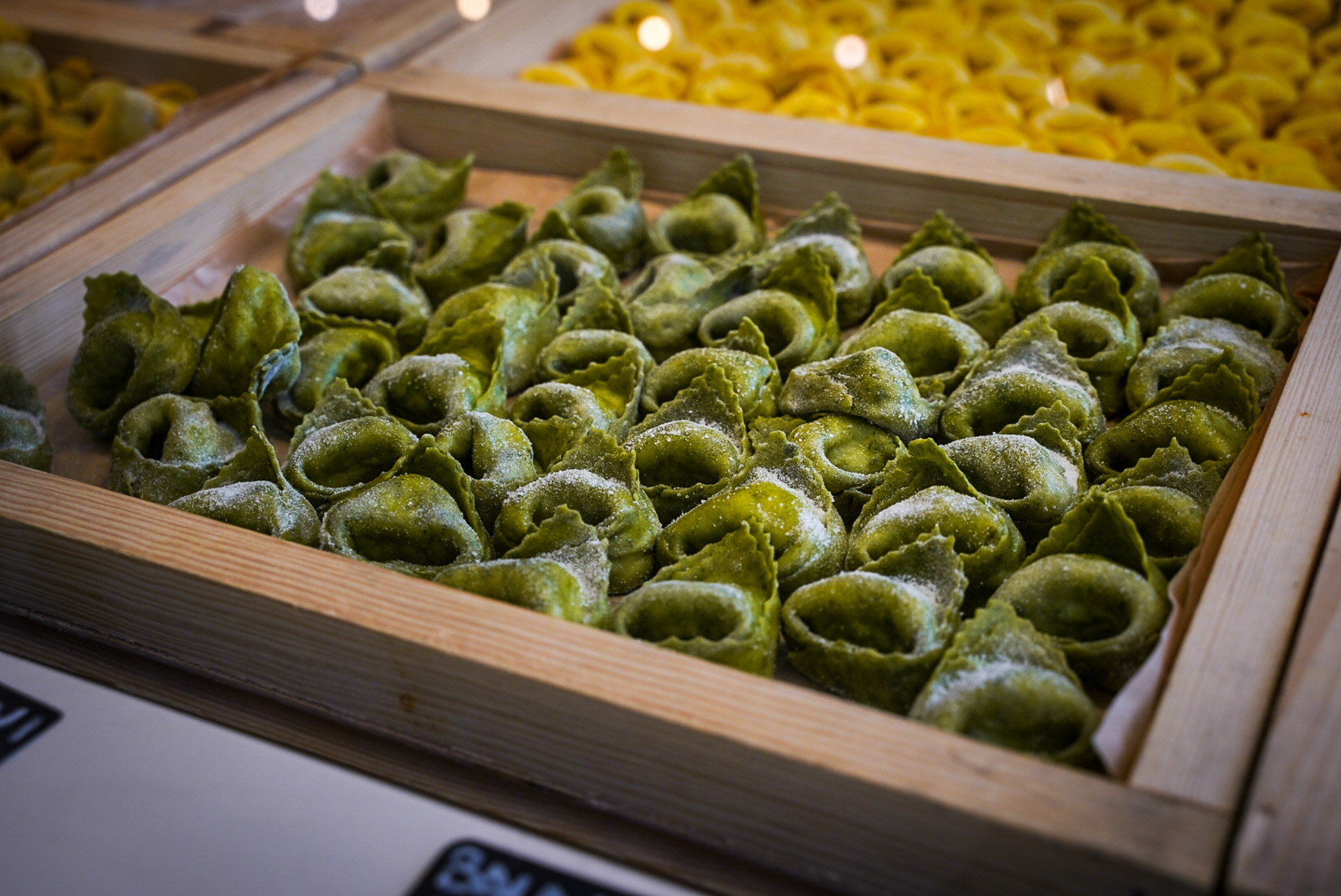
Fresh pasta from La Sfogline in Bologna, Italy
#9 Types of Bars with Limited Food Offerings
Below we’ve listed establishments where you can find wine and other boozy beverages. Most may sell a variety of panini (small sandwiches), charcuterie boards, as well as a few pasta and meat dishes.
- Mescita: Established as a wine shop, mescitas now serve small bites for those on the go. They may also sell olives and cheese to meats to paninis. It’s a great place to get a drink and a small bite to eat. Aperitivo anyone?
- Fiaschetteria: Another word for wine shop. They typically only sell bottles to go or drinks on premise. Small bites are offered.
- Enoteca: Traditionally, enotecas did not serve food. They were just places to go and drink wine. People typically stop by an enoteca for a wine tasting session to help decide what wine to bring home, or for a glass of wine while on their way to another spot for a full meal.
- Bottiglieria: A Bottiglieria is a bottle shop or cellar. Here you would typically buy a bottle and be on your way.
#10 An Actual “Bar” in Italy
You’ll notice “Bar” signs all over Italy and when you walk in, you’ll find espresso drinks, cornetto, and panini. Essentially, a bar is more of a café with the option to stand or sit down (at an additional cost).
While you can get alcohol at an Italian Bar, most people come to get breakfast here. And if this isn’t on your radar yet, try a shakerato while you’re at a bar.
#11 Salumeria
A salumeria is defined as an Italian deli with cured meats.
Salumerias feature many different kinds of cured Italian meats such as sausage, salami, prosciutto, ham, and many other cold cuts. Some also have cooked meats such as porchetta.
The process of curing meat is a way to preserve the meat by adding salt to draw out moisture and add flavor. You’ll often see dried meats hanging from ceilings and the top of shelves in a salumeria.
Salumerias also typically sell products that complement the deli meats such as cheese, bread (focaccia or ciabatta), tapenades, spreads, condiments, and baked goods. Some may also prepare sandwiches for takeout.
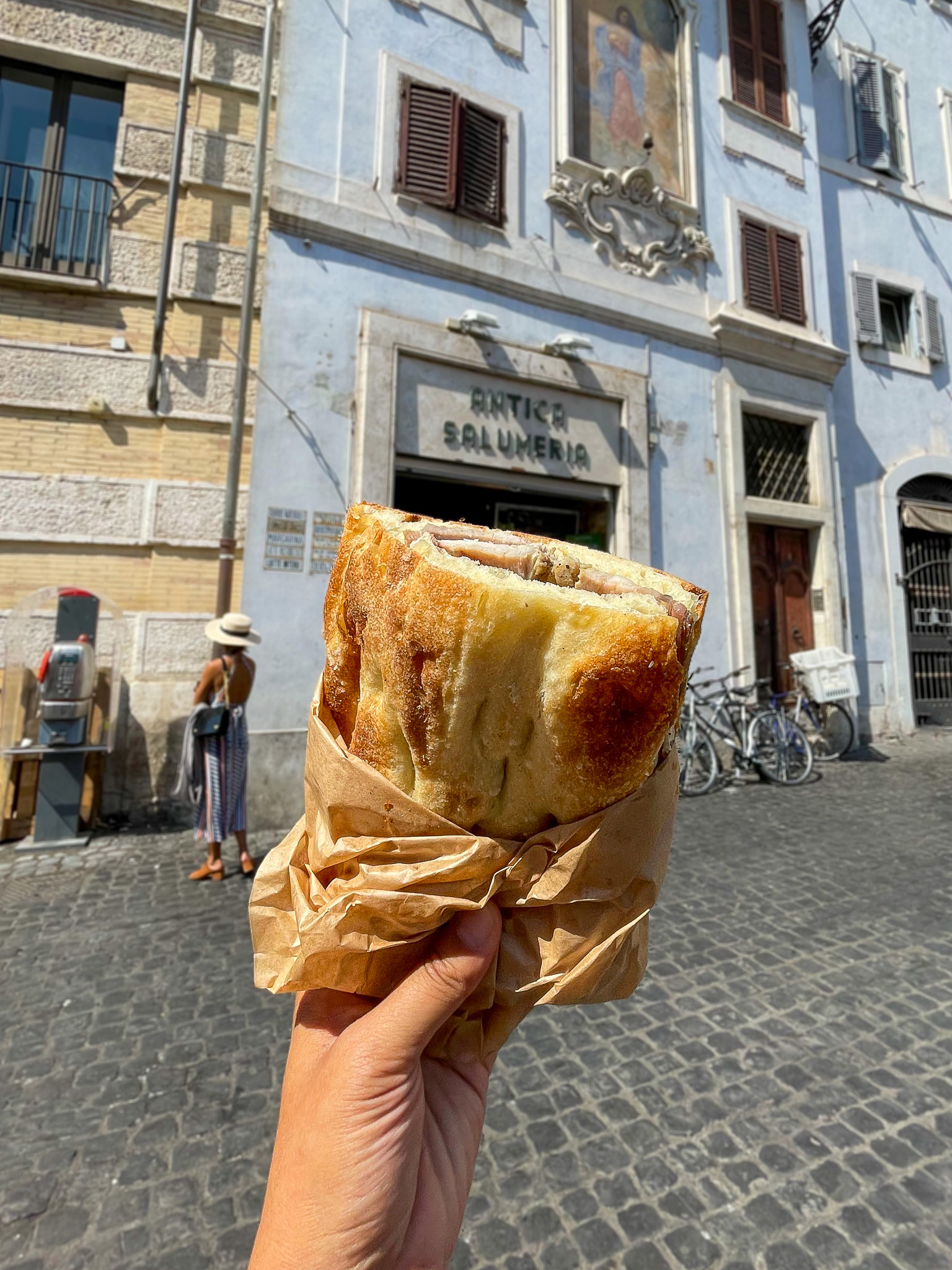
Porchetta Foccacia Sandwich from Antica Salumeria in Rome, Italy
#12 Paninoteca
Paninotecas are little sandwich shops. They’re located all over Italy and range in quality.
Don’t order a “panini” unless you intend to buy more than one. The “i” makes the word plural. Italian’s order a panino and often, on the go.
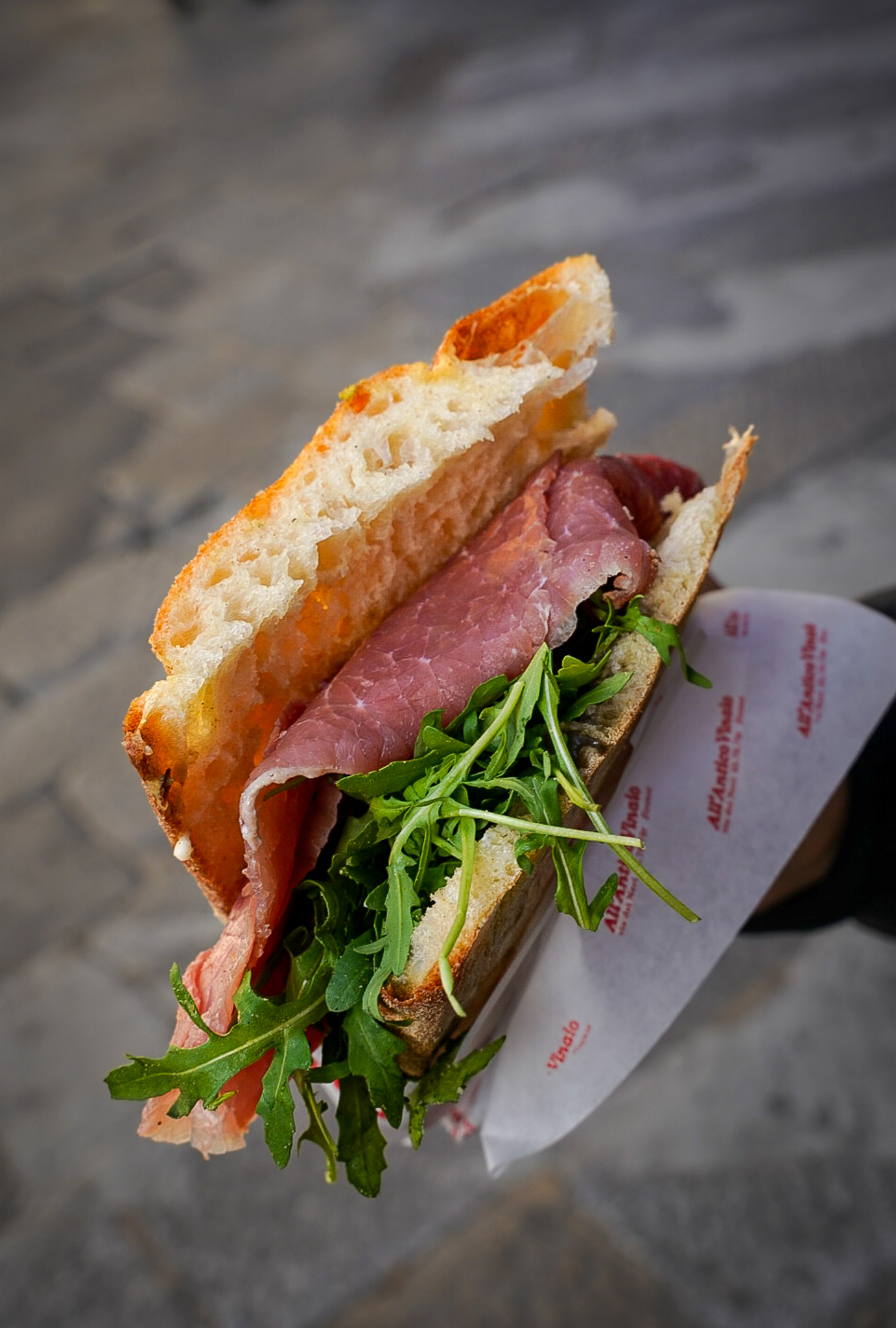
Panino from All’antico Vinaio in Florence Italy
#13 Pasticceria
This is an Italian bakery serving all types of fresh and delicious local pastries. They are probably the best places to go for breakfast as they will make their cornetto fresh and often supply them to nearby bars and eateries. You should be able to get a coffee here too!
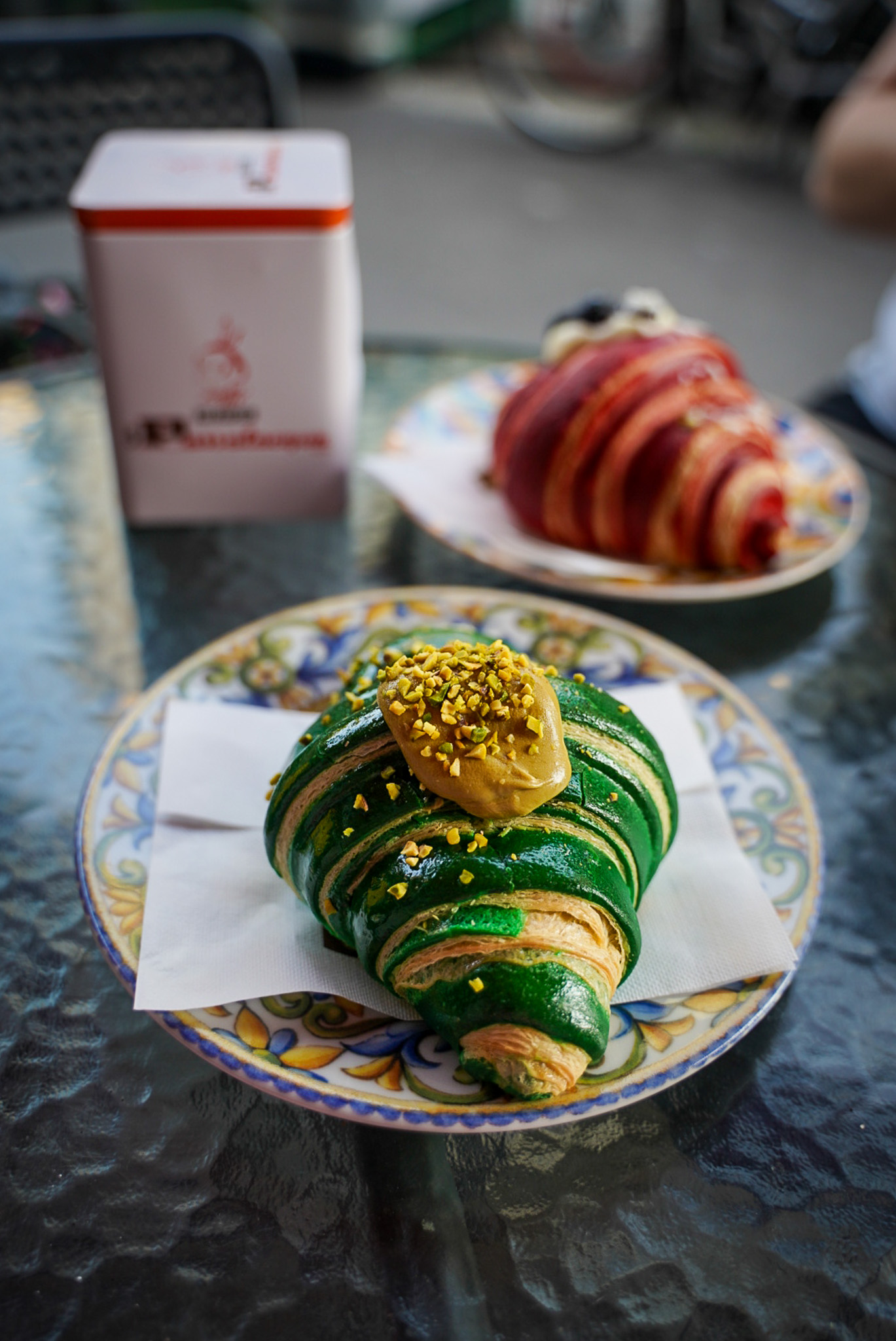
Colorful cornettos (or croissants) from Aroma Napoletano in Milan, Italy
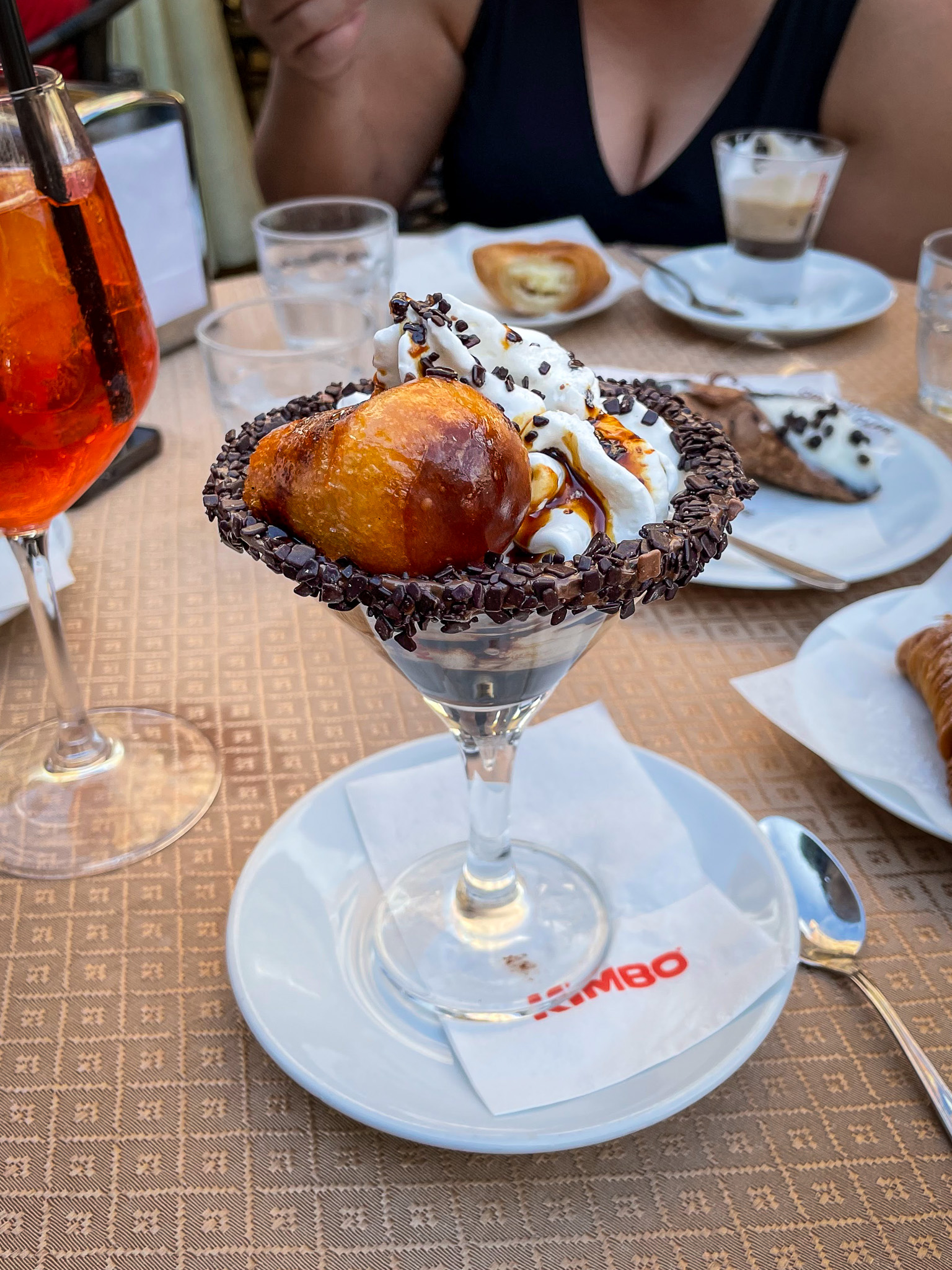
Baba al Rhum from Naples, Italy
#14 Pescheria
If you have any background in Italian, you can probably guess that a Pescheria sells seafood. Pescherias are not typically restaurants, but a market where you can purchase fresh fish.
In Italy, seafood can be purchased fresh almost anywhere but is best consumed in coastal cities close to the source!
#15 Gelateria or Cremeria
Bologna is the home of gelato but it’s served almost everywhere in Italy. A gelateria or cremeria serves gelato, but not all gelato is the same.
Be on the lookout for artisanal gelato and expect to pay anywhere between €2.50-4 for 2 scoops of gelato (waffle cone included). Any more and you’re likely at a non-authentic gelateria and tourist trap.
It’s best to find a gelateria away from places with heavy traffic.
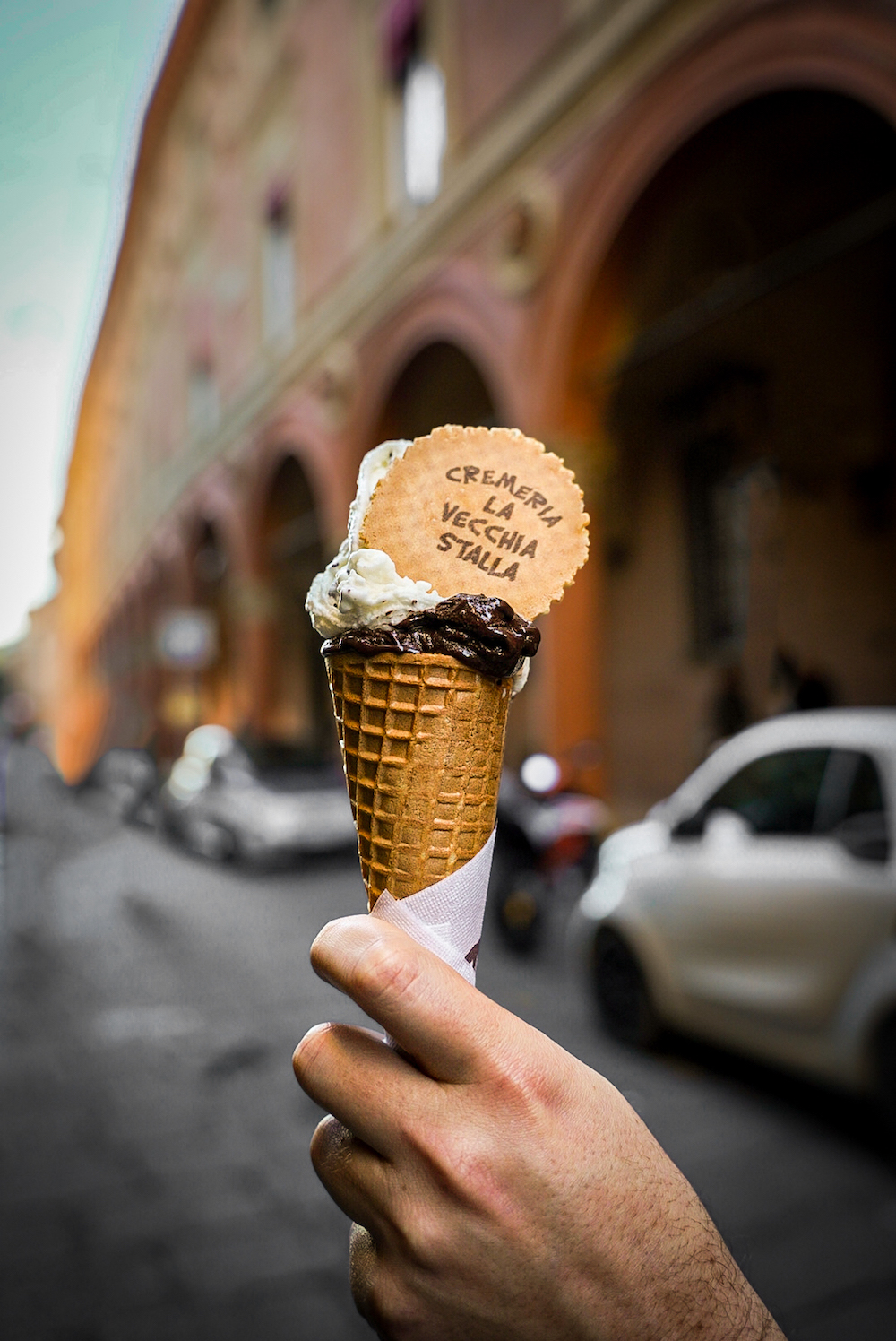
Gelato from Cremeria la Vecchia Stalla in Bologna, Italy
If you found our glossary of Italian eateries helpful, please share it on Pinterest. Thanks for your support!
Thank you for visiting today! If you found this encouraging or informative, please connect with us on Instagram or TikTok. Sign up for our monthly newsletter for updates and more. We promise we won't spam you! Feel free to unsubscribe anytime. If you're a brand and want to work with us, please visit this page to get in touch.

